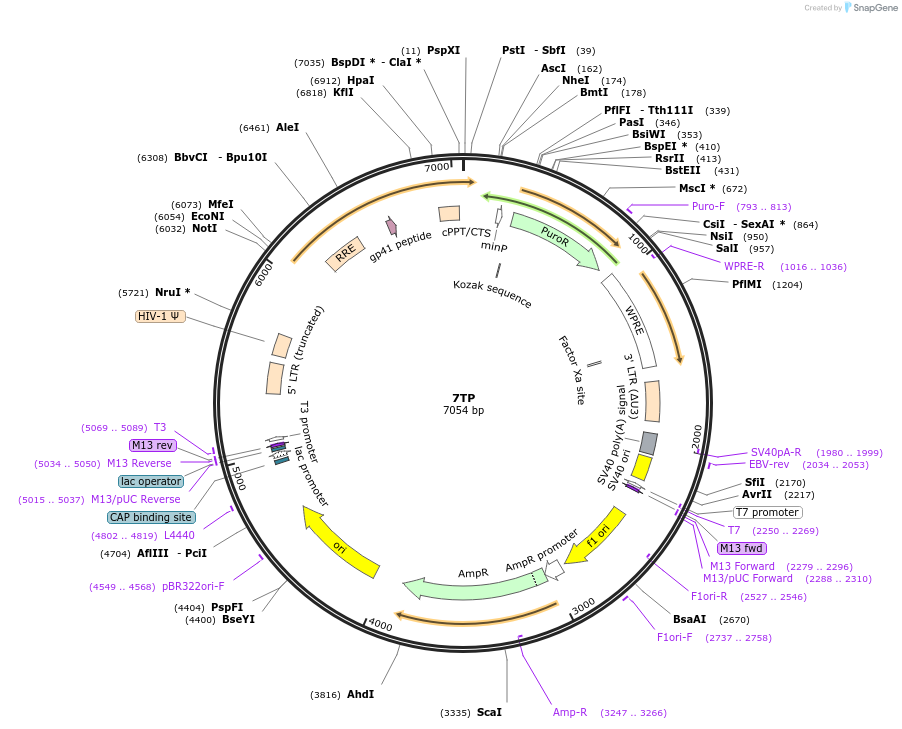-
Depositing Lab
-
Publication
-
Sequence Information
Ordering
| Item | Catalog # | Description | Quantity | Price (USD) | |
|---|---|---|---|---|---|
| Plasmid | 24309 | Standard format: Plasmid sent in bacteria as agar stab | 1 | $85 | |
Backbone
-
Vector backbonepRRLSIN.cPPT.PGK-GFP.WPRE
-
Backbone manufacturerNaldini/Trono (Addgene #12252)
- Backbone size w/o insert (bp) 6132
-
Vector typeLentiviral
Growth in Bacteria
-
Bacterial Resistance(s)Ampicillin, 100 μg/mL
-
Growth Temperature37°C
-
Growth Strain(s)Stbl3
-
Copy numberHigh Copy
Gene/Insert
-
Gene/Insert name7xTcf-PuroR
-
Alt namePuro
-
Alt namepuromycin N-acetyltransferase
-
SpeciesStreptomyces alboniger
-
Insert Size (bp)922
Cloning Information
- Cloning method Restriction Enzyme
- 5′ cloning site PstI (not destroyed)
- 3′ cloning site SalI (not destroyed)
- 5′ sequencing primer GGCCCGAAGGAATAGAAG
- 3′ sequencing primer AACGGGCCACAACTCCTC (Common Sequencing Primers)
Resource Information
-
A portion of this plasmid was derived from a plasmid made byThe 7xTcf promoter is derived from pSuperTOPflash, published in Veeman MT et al., Curr Biol 13: 680–685 (2003)
-
Article Citing this Plasmid
Terms and Licenses
-
Academic/Nonprofit Terms
-
Industry Terms
- Not Available to Industry
Trademarks:
- Zeocin® is an InvivoGen trademark.
Depositor Comments
TCF repeat sequence is AGATCAAAGGgg
This plasmid requires a 2nd generation lentiviral packaging system.
These plasmids were created by your colleagues. Please acknowledge the Principal Investigator, cite the article in which the plasmids were described, and include Addgene in the Materials and Methods of your future publications.
-
For your Materials & Methods section:
7TP was a gift from Roel Nusse (Addgene plasmid # 24309 ; http://n2t.net/addgene:24309 ; RRID:Addgene_24309) -
For your References section:
Lentiviral vectors to probe and manipulate the wnt signaling pathway. Fuerer C, Nusse R. PLoS One. 2010 . 5(2):e9370. 10.1371/journal.pone.0009370 PubMed 20186325





